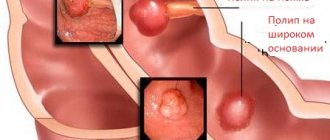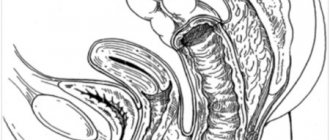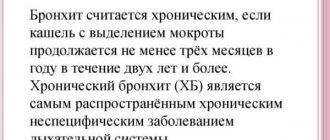Cough
is a reflex reaction of the body to irritation of the mucous membrane of the respiratory tract.
The body tries to clear the airways with the help of forced (sharp, intensified) exhalation, which has a characteristic sound. Thus, coughing is a protective reaction of the body. And at the same time, it is a symptom of many diseases. The urge to cough means that free breathing is impaired for some reason, for example, due to the development of inflammation. Cough
Cough comes in different forms. The way we cough can help determine the cause of the cough and diagnose the disease that caused it. It is advisable to pay attention to the main characteristics of a cough in order to tell your doctor about them.
How long does the cough last?
To assess the clinical development of the disease, it is important to determine the nature of the cough. It can be acute, protracted and chronic. A cough is considered acute if it has been present for less than three weeks. Such a cough, as a rule, accompanies the development of acute respiratory diseases and serves to clear the airways of phlegm. Acute cough is usually persistent; that is, while a person is sick, he coughs, and a decrease in the severity of attacks and the cessation of coughing indicates recovery. If the cough returns again after some time, then we are talking about a lingering cough. A cough that lasts from 3 weeks to 3 months is considered to be protracted. Such a cough (a month or longer) means that the disease causing it develops slowly and tends to become chronic. If a cough does not leave a person for more than 3 months, it is classified as chronic. With chronic cough, periods of exacerbation alternate with periods of remission (when there is no cough). Chronic cough is also characterized by fixation - the occurrence of a cough at a certain time of day. Chronic cough is an alarming symptom because it is usually a sign of serious illness. A constant cough loses its useful function and may itself be the cause of the development of certain pathologies.
4.Treatment
Obviously, treating a dry cough means asking the question incorrectly. Therapy is always aimed at eliminating the causes, i.e., a pathological process or condition diagnosed during examination. Often the first priority is to change the nature of the cough to a productive, naturally cleansing one; For these purposes, the so-called expectorants or mucoregulators, herbal remedies, physiotherapeutic procedures.
Drugs are often prescribed that suppress the cough reflex itself. It should, however, be understood: given the variety of possible causes described above, as well as the huge range of antitussive medications available in pharmacies without a prescription, self-medication is simply dangerous, and any specific recommendations are inappropriate here. Any prescriptions of this kind should be made exclusively by a doctor and based on the results of an objective diagnosis.
Sign up for a consultation
Is the cough wet or dry?
A wet (or wet) cough is accompanied by sputum production, which is why it is also called productive. Microbes and their waste products are removed from the respiratory tract with sputum. With a viral infection, the disease often begins with a dry cough
, which subsequently turns into wet. The type of sputum is of great importance. The appearance of pus in the sputum indicates a bacterial infection. An increase in its quantity may indicate an abscess rupture or worsening of the condition. An unfavorable sign is the appearance of blood in the sputum.
Chronic cough with chronic bronchitis
This disease is characterized by chronic inflammation of the airways and excess mucus production. Therapy for this chronic disease is aimed at reducing the formation of sputum and its effective removal from the bronchial tree, reducing the level of inflammation of the respiratory tract, and reducing bronchospasm. It is necessary to note the need to stop exposure to adverse factors (cessation of smoking, compliance with labor safety standards in hazardous industries).
Another disease in which cough is one of the important symptoms of the disease is bronchiectasis
. The disease is characterized by a chronic suppurative process in irreversibly changed (dilated, deformed) and functionally defective bronchi, mainly in the lower parts of the lungs. It is also accompanied by a violation of the drainage function of the bronchial tree and stagnation of sputum. The doctor makes a diagnosis by carefully collecting anamnesis and analyzing the data obtained as a result of the examination. Specialists perform endoscopic examination of the bronchi (videobronchoscopy), and also examine the chest organs using computed tomography.
It should be noted that chronic cough in bronchiectasis is a way to remove large volumes of sputum and does not require treatment outside of an exacerbation. In case of exacerbation of bronchiectasis, antibacterial therapy is indicated based on the results of sputum culture, as well as mucolytic (sputum thinning) and expectorant therapy, the purpose of which is to improve mucociliary clearance.
It is also necessary to mention chronic cough, which bothers the patient for a long time after suffering infectious diseases of the respiratory tract, for example: o.bronchitis, o.tracheitis and pneumonia. With a cough that continues after an infectious disease, laboratory and chest x-ray findings are usually normal. Usually, a cough of this kind stops on its own over time, however, in cases of protracted course, physiotherapeutic treatment, drainage massage, and nembulizer therapy are recommended.
Oncological diseases of the respiratory system can also cause chronic cough. To diagnose such dangerous diseases, the doctor uses anamnesis, a thorough examination of the patient, prescribes radiation methods, fibro- or video bronchoscopy, if necessary, a bronchial biopsy is performed followed by histological examination, sputum is examined using laboratory methods, etc.
Causes of cough. Diseases that cause cough.
The cause of cough may be:
- acute respiratory infections (flu, ARVI);
- diseases of the upper respiratory tract (chronic rhinitis, chronic sinusitis, pharyngitis) - in this case, coughed up mucus enters the respiratory tract from the nasopharynx;
- laryngitis;
- acute or chronic tracheitis;
- acute or chronic bronchitis;
- pneumonia (pneumonia);
- pleurisy;
- bronchial asthma;
- tumor processes (including lung cancer);
- tuberculosis;
- heart failure;
- ascaridiosis (infection with roundworms);
- smoking;
- inhalation of polluted air (cough is common in representatives of some professions - miners, joiners, carpenters);
- taking certain medications used to treat heart disease and hypertension.
Cough due to postnasal drip
Cause of Drip syndrome
is a secretion that, when you have a runny nose, flows from the nasal cavity into the pharynx, its laryngeal part. The cough is reflexive in nature and appears as a result of mechanical irritation of the pharyngeal receptors. In this case, it is necessary to treat rhinitis that caused postnasal drip syndrome. And, of course, treatment depends on the genesis of this rhinitis. For non-allergic rhinitis, vasoconstrictors and antihistamines are prescribed. The combination of these drugs reduces swelling and mucus production. In the case of allergic rhinitis, glucocorticoids and cromoglycates in the form of a nasal spray are usually used.
Child's cough
Child's cough
In children, the cause of cough can also be:
- whooping cough;
- measles;
- mouth breathing. If a child constantly has a stuffy nose and is used to breathing through his mouth, cold and dry air entering the respiratory tract that has not passed through the nasal sinuses can cause irritation of the mucous membrane and cough;
- entry of a foreign body into the respiratory tract. In this case, the cough begins suddenly, the child turns red and begins to choke. It is necessary to help the child cough up a foreign object, for which you should press his chest and stomach to a hard surface, tap between his shoulder blades, or hold him upside down and shake him, tapping on his back. If help fails, the child should be taken to the hospital immediately.
Diagnosis of cough
This article was not able to list all the diseases in which cough occurs as a symptom. To summarize, we can say that cough is characteristic of many diseases and occurs for various reasons; in some cases, it does not require treatment in itself. To assess this symptom in the pathogenesis of the disease and prescribe adequate therapy, a complete and comprehensive diagnosis is necessary, which includes consultation with a therapist, ENT doctor, pulmonologist, and, if necessary, a cardiologist and neurologist, and perhaps other specialists.
The gold standard for diagnosis is Rg-diagnosis of the chest organs, and, if necessary, computed tomography. A research method such as fiber or video bronchoscopy (FBS) is often prescribed for coughing; it allows you to visually assess the patency and condition of the mucous membranes of the bronchial tree, as well as obtain swabs and tissue samples for laboratory and cytological studies. A functional study of the respiratory system is spirography or external respiration function. It gives an idea of how fully or limitedly the respiratory system works.
In conclusion, I would like to note that chronic cough is a factor that significantly worsens a person’s quality of life, and in addition, it can be a symptom of serious diseases, which, if left untreated, can lead to disability and death.
A cough is a reason to see a doctor
Cough is a very common symptom. Very often it is combined with other symptoms such as a runny nose, fever, sore throat or chest pain. In such cases, we usually resort to medical help in a timely manner.
But in other cases, cough may be the only symptom: other symptoms are completely absent or appear vaguely. And then the illusion arises that there is nothing serious and you don’t need to see a doctor. In this case, the cough is often chronic, since it is the chronic cough that, as a rule, acts as an isolated symptom.
This is a dangerous misconception. Since many serious diseases (tumors, lung cancer) in the initial stages can only manifest themselves as a cough. In case of heart failure, the patient may complain of cough and not pay attention to other symptoms (shortness of breath, weakness, dizziness, hypertension). Therefore, if the cough does not leave you for several weeks ( cough for more than a month
– this is already a lingering cough) or if you notice
an increase in cough in the morning or at night
, be sure to consult a doctor.
If your child coughs, take him to the doctor. Children's immunity is weaker than that of an adult, so more sensitive monitoring is required over the child's health. Perhaps the child is simply clearing his throat (a healthy child can cough up to 10-15 times a day - this is how his body clears the airways of dust and germs), or maybe he develops an inflammatory process in the nasopharynx or nasal breathing is impaired..
Symptomatic therapy
Cough caused by natural causes goes away quickly after the irritating factor is eliminated. Until the causes of a pathological superficial cough are clarified, rinsing with antiseptics, local anesthetics (if combined with sore throat and sore throat), moisturizing and softening inhalations can be recommended. Self-administration of antibiotics and antitussives is unacceptable. A persistent cough lasting more than 7-10 days, with increasing shortness of breath and difficulty swallowing, is an indication for emergency medical attention.









